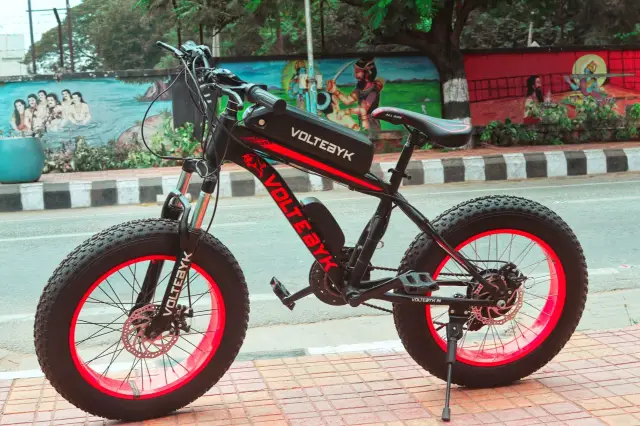Electric bikes, also known as e-bikes, have become increasingly popular due to their convenience and environmental benefits. Thanks to their electric motor assist, they allow riders to cover longer distances and tackle hills easily.
However, many riders may wonder if riding an electric bike in the rain is safe.
This blog post will explore the safety considerations, preparation, riding techniques, and overall feasibility of riding an electric bike in wet weather.
Can You Ride An Electric Bike In The Rain?
Yes, riding an electric bike in the rain is possible, but it is important to take certain safety precautions and be aware of the potential hazards.
Wet weather can make the road surface slippery, reduce visibility, and make it harder to control your bike. It’s also important to ensure your electric bike is properly maintained and equipped with the necessary accessories to handle wet conditions.
Adjusting your riding style and techniques to suit the weather conditions can help you ride safely and comfortably in the rain.
However, it’s always important to pay attention to the local weather; if the conditions are severe, it’s better to avoid riding. Safety should always come first.
Why It is Not Recommended To Ride An Electric Bike In The Rain
Riding an electric bike in the rain can present several safety hazards. It’s important to be aware of these hazards and take necessary precautions to stay safe while riding in wet weather conditions.
1. Slipperiness
Wet roads can be slippery, making it harder to control your bike. Be extra cautious when braking, accelerating, and turning.
2. Reduced visibility
Rain and fog can reduce visibility, making it harder to see other road users and potential hazards. Use your lights and reflective clothing to increase visibility.
3. Hydroplaning
When riding through puddles or standing water, your tires can lose contact with the road surface, causing you to lose control of the bike. Avoid puddles and standing water if possible.
4. Reduced traction
Wet roads can reduce traction, making it harder to control your bike. Slow down and use extra caution when turning.
5. Electrical hazards
Electric bikes rely on electrical components to function, which can be damaged by water. Ensure your electric bike is properly maintained and equipped with the necessary accessories to protect it from water damage.

10 Tips for Riding an Electric Bike in the Rain
1. Check the weather forecast
Check the weather forecast before heading out to ensure it’s safe to ride before you start your ride, check the weather forecast to ensure that the conditions are safe for riding.
If the forecast calls for heavy rain or thunderstorms, it’s best to wait for better weather before heading out.
2. Use a bike that is 100% maintained
Before riding in the rain, it’s important to ensure your electric bike is in good working condition. Check the brakes, tires, and lights to ensure they work properly.
Also, ensure your electric bike is equipped with fenders, a rain cover for the battery, and a reliable lighting system.
3. Wear appropriate clothing
Dressing appropriately for the weather is important to stay comfortable and safe while riding in the rain.
Wear a waterproof jacket and pants, gloves, and a helmet with a visor to protect yourself from the rain.
4. Reduce your speed
Reduce your speed and be extra cautious on wet roads. Wet roads can be slippery and more difficult to control, so it’s important to reduce your speed and be extra cautious while riding in the rain.
5. Use the electric motor assist sparingly
The added power provided by the electric motor assist can make it easier to lose control on wet roads. Use the assist sparingly and be extra cautious when accelerating or braking.
6. Use both brakes, but apply them gently
When braking on wet roads, it’s important to use both brakes and apply them gently to avoid skidding.
7. Keep a safe distance from other vehicles
Wet roads can increase stopping distances, so keeping a safe distance from other vehicles is important to allow for extra stopping distance.
8. Use extra caution when turning
Wet roads can reduce traction, making it more difficult to turn. Use extra caution when turning and avoid making sudden or sharp turns.
9. Avoid puddles and standing water
Puddles and standing water can hide hazards or cause hydroplaning. Try to avoid them if possible.
10. Use your lights and reflective clothing
In low visibility conditions, it’s important to make yourself as visible as possible to other road users. Use your lights and reflective clothing to increase your visibility.
How To Prepare Your Electric Bike for Rain
Preparing your electric bike for rain involves several steps to ensure that it is in good working condition and equipped to handle wet weather conditions. Here are some tips for preparing your electric bike for rain:
1. Check the brakes
Ensure the brakes are working properly and the pads have enough friction. Wet roads can reduce braking power, so it’s important to have brakes in good working condition.
2. Check the tires
Make sure the tires are properly inflated and have enough tread. Wet roads can reduce traction, so it’s important to have tires with good tread to help maintain control.
3. Check the lights
Ensure the lights are working properly, as the rain can reduce visibility.
4. Install fenders
Fenders can help keep water and debris from spraying onto you and your bike.
5. Install a rain cover for the battery
A rain cover can help protect the battery from water damage.
6. Check the wiring
Check the wiring of the bike to ensure they are properly insulated and protected from water damage
7. Check the seat and handlebar
Make sure they are tight and in good condition, and they can become slippery when wet
8. Check the chain
Make sure it’s lubricated and in good condition, as it can rust or seize up in wet weather
9. Check the e-bike controller
Make sure it’s properly sealed to protect it from water damage
10. Check the electric motor
Make sure it’s protected from water and that the seals are in good condition
Following these tips can help ensure that your electric bike is ready to handle wet weather conditions and keep you safe while riding in the rain.
Conclusion
E-bikes have become popular, with many more models becoming available each year as technology advances. Now is the time to buy an e-bike—they come in all shapes and sizes, from small urban cruisers to large mountain bikes.
And if one last barrier has been holding you back from buying an e-bike, you might be glad to know that they generally hold up fine in the rain.
Always check your owner’s manual to see what your bike can handle. After all, rain can still limit some of your riding options, as even water-resistant components may not be designed for use in severe weather conditions.
